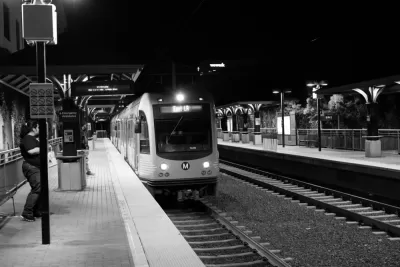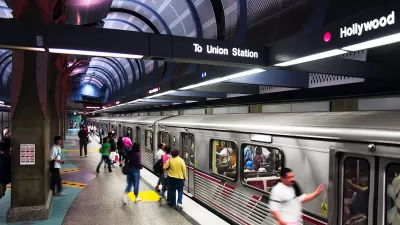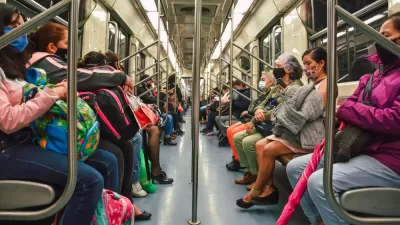In a survey, riders expressed concern about safety, cleanliness, and timeliness on the region’s buses and trains.

Women are using Los Angeles Metro’s buses and trains less than before the pandemic, according to the Los Angeles Metropolitan Transportation Authority (L.A. Metro). Writing for the Los Angeles Times, Grace Toohey explains that the agency says it is close to getting back to regular schedules but still faces an operator shortage, leading to unreliable service and long headways.
In a survey administered by Metro to over 12,000 transit riders, riders cited safety as a top concern, with other concerns including cleanliness and reliability. “Elizabeth Medrano, a bus rider since the 1990s and now a transit organizer with the nonprofit Women Organizing Resources, Knowledge and Services, said it’s hard to pinpoint one reason for decreased female ridership, but noted the pandemic is still affecting many women, who are struggling financially as they are unable to return to the jobs they held before the pandemic.”
Jennifer Vides, Metro’s chief customer experience officer, says the agency is working to address rider complaints. “We are looking at all of it, we are convening teams to talk about the results from the survey and to develop a customer experience plan that addresses these things,” Vides told the L.A. Times. “. Metro officials and community leaders are also hopeful that the new transit ambassador pilot program — which is putting 300 uniformed and trained, yet unarmed, Metro staff on trains and buses — will improve safety by increasing the number of people at transit hubs and providing support to anyone who needs help.”
FULL STORY: Women's ridership is down on L.A. Metro, new survey shows

Study: Maui’s Plan to Convert Vacation Rentals to Long-Term Housing Could Cause Nearly $1 Billion Economic Loss
The plan would reduce visitor accommodation by 25,% resulting in 1,900 jobs lost.

North Texas Transit Leaders Tout Benefits of TOD for Growing Region
At a summit focused on transit-oriented development, policymakers discussed how North Texas’ expanded light rail system can serve as a tool for economic growth.

Why Should We Subsidize Public Transportation?
Many public transit agencies face financial stress due to rising costs, declining fare revenue, and declining subsidies. Transit advocates must provide a strong business case for increasing public transit funding.

How to Make US Trains Faster
Changes to boarding platforms and a switch to electric trains could improve U.S. passenger rail service without the added cost of high-speed rail.

Columbia’s Revitalized ‘Loop’ Is a Hub for Local Entrepreneurs
A focus on small businesses is helping a commercial corridor in Columbia, Missouri thrive.

Invasive Insect Threatens Minnesota’s Ash Forests
The Emerald Ash Borer is a rapidly spreading invasive pest threatening Minnesota’s ash trees, and homeowners are encouraged to plant diverse replacement species, avoid moving ash firewood, and monitor for signs of infestation.
Urban Design for Planners 1: Software Tools
This six-course series explores essential urban design concepts using open source software and equips planners with the tools they need to participate fully in the urban design process.
Planning for Universal Design
Learn the tools for implementing Universal Design in planning regulations.
City of Santa Clarita
Ascent Environmental
Institute for Housing and Urban Development Studies (IHS)
City of Grandview
Harvard GSD Executive Education
Toledo-Lucas County Plan Commissions
Salt Lake City
NYU Wagner Graduate School of Public Service





























